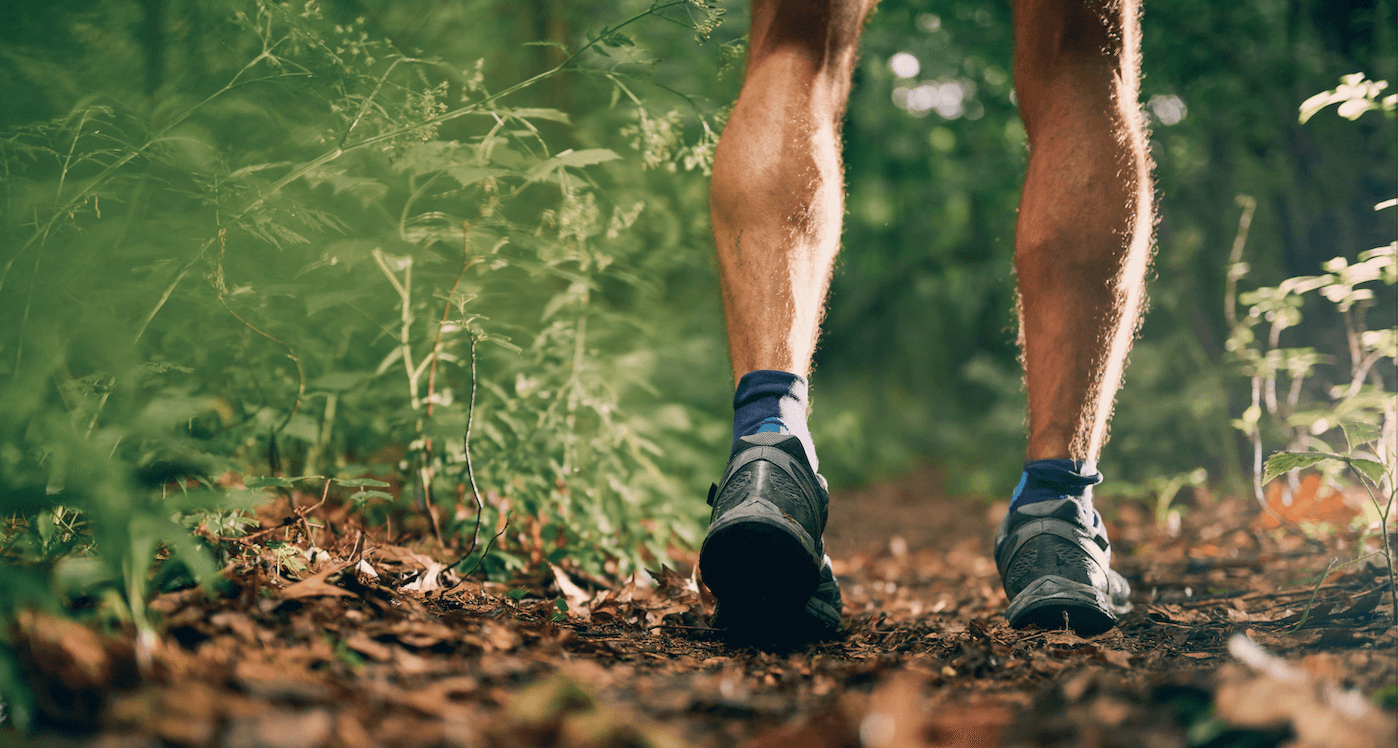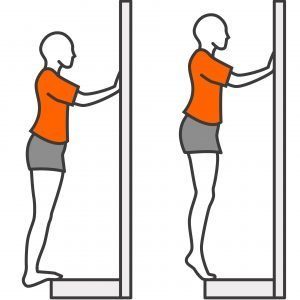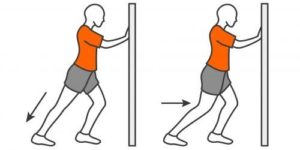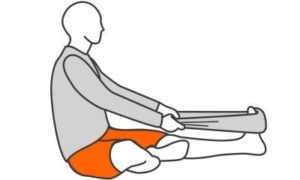
How To Strengthen & Stretch Calf Muscles
The calf consists of the Gastrocnemius and Soleus muscles. These two muscles work together to plantar flex the foot and flex the knee, which is necessary to move forward in walking and running. It is not uncommon to have soreness and tiredness in the calves after a long day of work and activity.
You can take precautions to strengthening, foam rolling and stretching calf muscles to reduce fatigue and improve recovery.
Strengthening Exercises
Heel Raises
3 sets of 15 – 20 repetitions
- Start on a step with your toes at the edge
- Drop your heels and go onto your tip toes
- Make sure you are balanced against the wall, and it is a solid step to prevent falling
Beginners: start with seated calf raises, eventually progressing to even ground
Intermediate: single calf raises, gradually adding weight to yourself (i.e. backpack with books)
Farmer’s Walk (on tip toes)
Walk for 60 seconds, do this 3 times a day
- Hold a pair of dumbbells on both hands
- Make sure you stand up tall, and go on your tip toes
- Forgo the weights if it is too challenging, or increase the weight if it gets easy.
Foam Rolling
Why do we foam roll?
Our muscles come in multiple fibres banded together, and the fascia is the connective tissue that holds and stabilize the different muscle fibres together. When you engage in a lot of physical activity, strenuous forces cause muscle break down, so they are constantly repairing themselves.
Over time, it is common to have tightness build up in the musculature and fascia. This happens because the fibres shorten and contract to protect itself from further damage. When nothing is done to relieve pressure, muscle knots – or trigger points – can develop. This affects not just the range of motion, but also the full function of the muscles.
Typically, the advice we’re given is to stretch, but then there’s massage therapy – another type of treatment in itself.
How foam rolling works
Foam rolling is sometimes called a self-myofascial release (SMR), or in simple words, a self-massage. The goal of foam rolling is to loosen up tight fascia and muscles by eliminating scar tissue and stretching it out. Along with stretching, foam rolling helps muscles get back in tip-top condition. (Mohr, et al. 2014).
Understandably, a registered massage therapist would be able to target specific areas for you and an assessment that would tell you if there be any underlying conditions to be aware of. But a foam roller is an easy tool to own that will assist with general muscle recovery at home.
It is best to use a foam roller as the calf muscles are a bigger muscle group. You could also utilize a massage stick. Anything smaller should only be used for smaller muscle groups or if there is a knot to release.
Foam rolling should also be done before stretching, as this helps to prime the muscles by loosening and warming them up for your stretches.
Stretching Exercises
Before you start doing these, here are some tips to be aware of:
- Do not bounce! This is called ballistic stretching and it over stretches the muscle into a position that it may not be ready for.
- You should lean until you feel a light stretch in the muscle you are targeting, then hold it for the appropriate time.
- The next rep that you do, it will be able to go further, and with regular stretching, you will improve range of motion
Gastrocnemius Stretch (see a)
Hold this position for 30-45 seconds, 3 reps, twice a day
- Stand with one foot in front of you and the other at the back, feet facing forward
- Make sure both feet are flat on the ground
- Bend the front knee forward while keeping the back knee straight
- You should feel a stretch in the Gastrocnemius, which will be around the mid-upper portion of the muscle
Soleus Stretch (see b)
Hold for 30 – 45 seconds each time, 3 reps, twice a day
- Same position as the Gastrocnemius stretch, but this time both knees should be bent
- You will feel the stretch go lower in the calf
Towel / Band Calf Stretch
Hold for 30 – 45 seconds each time, 3 reps, twice a day
- Sit on the ground or have your leg extended straight up on a chair or coffee table
- Loop a towel or resistance band around the ball of your foot and hold on to the ends
- Pull the foot into flexion towards you
- If you lean forward, you can also get a bit of stretch into the hamstrings
Remember, these are simple exercises that should be done regularly, especially when you have a job that requires you to stand for an extended period of time. Yes, it does take time out of your day and may feel like a hassle, but it is something you can do to assist with your muscle health. Try fitting these exercises and stretches into your daily routine, such as after a walk or run.
2 Comments
-
I used this website to get information for my Year 7 Anatomy assessment. This has very useful infromation and I thank you for helping find answers Walking Mobility Clinics!!!
-
Muito educacional, aguardo visitar novamente.



